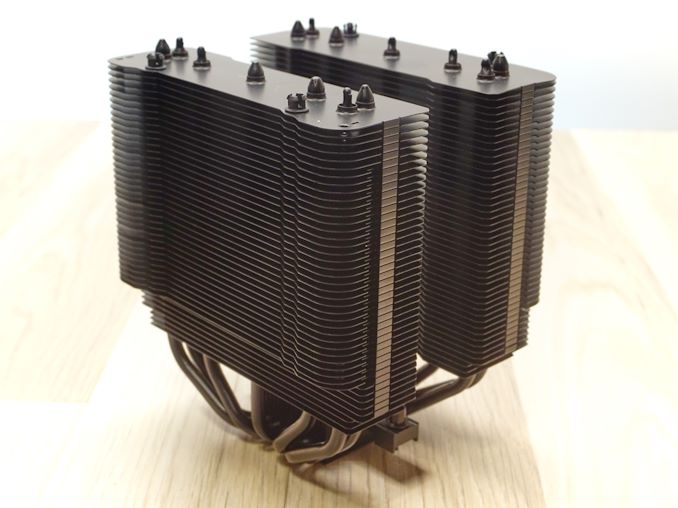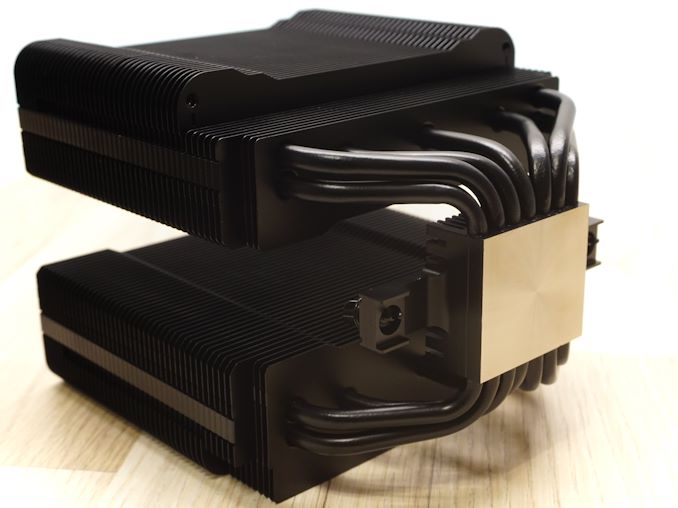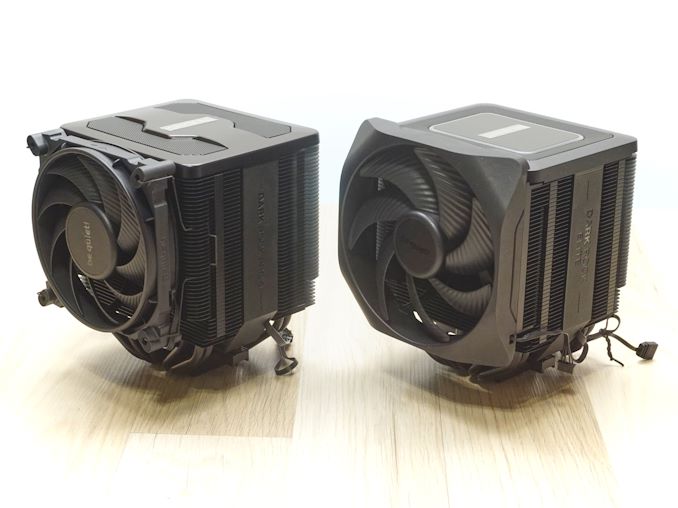The Be Quiet! Dark Rock Pro 5 CPU Cooler Review: When Less Is More
by E. Fylladitakis on January 16, 2024 10:00 AM EST- Posted in
- Cases/Cooling/PSUs
- be quiet!
- CPU cooler
- Air Cooling
Conclusion
Be Quiet! has developed the Dark Rock Pro 5 to compete in the high-end segment of the market, positioning it among the advanced offerings from renowned global manufacturers. Engineered for high performance and quiet operation, it is marketed as a value-conscious option, with a retail price of $80, which is more accessible compared to the Dark Rock Elite's $115 price tag.
The Dark Rock Pro 5 from Be Quiet! stands out in a very crowded field of CPU coolers with its superior build quality and visually appealing design. The attention to detail and high standards of craftsmanship are evident, contributing to its durability and longevity. Its robust construction ensures it can endure long-term use, setting a notable standard in this regard.
In terms of design, the Dark Rock Pro 5 is thoughtfully developed to meet the needs of its target audience. However, its complexity should be considered as it may not fit all cases and motherboards. Be Quiet! has made efforts to maximize compatibility, but factors such as additional height requirements for increased RAM clearance when adjusting the front fan need to be taken into account. The Dark Rock Pro 5 lacks the Elite's smooth rail system for the front cooling fan, but its height can still be adjusted if necessary to increase the clearance of the RAM slots. The smaller 120 mm fan actually makes the Dark Rock Pro 5 more flexible than the Dark Rock Elite, as it provides better clearance than its predecessor out of the box and reduces the possibility of case width complications.
Regarding cooling performance, the Dark Rock Pro 5 delivers fairly good results overall, maintaining great performance in its category. Its standout feature under typical operating conditions is its acoustic performance. Due to its substantial thermal resistance, the cooler operates quietly even under significant load, providing users with a tranquil computing environment. This makes it an ideal choice for those who prioritize quiet operation in their computing setup and prefer not to resort to more complex solutions like AIO coolers.
In conclusion, the Dark Rock Pro 5 CPU cooler from Be Quiet! represents a compelling choice for those seeking a reliable, high-quality cooling solution that balances performance and affordability. While it offers exceptional performance and quality, its more reasonable $80 retail price broadens its appeal. Compared to the Dark Rock Elite, users lose the RGB lighting and some top-end performance due to the smaller and slower fans, but we suspect that many will opt for the visually simpler and quieter Dark Rock Pro 5 that also retails for $30 less. It is well-suited for users who demand very low acoustic levels and great quality from an air cooler and are looking for a product that offers great overall value for its price.













20 Comments
View All Comments
Footman36 - Tuesday, January 16, 2024 - link
Appreciate the review. $80 is still ridiculously expensive for a HSF when you can buy the Thermalright Phantom Spirit for $33 and get similar performance. I would like to see a review of this HSF on Anandtech.PeachNCream - Sunday, January 21, 2024 - link
I get and support where you're coming from. A good condition used laptop can sink you for under $200 (new laptops start at around that price as well though adequate future proofing is more or less a $400 laptop) and for your $80 here you get a single component that doesn't compute anything on its own that you have to be bothered to put together yourself. What a waste! But also, in fairness, that DIY segment is collapsing as we learn we can just use a phone we already own or carry our computer anywhere in the form of a power-efficient and inexpensive laptop so prices relative to inflation have fallen a bit lately so $80 isn't all that bad these days. Still though, I agree with you that it's an utterly stupid venture to go purchasing an overpriced, non-movable desktop PC more than 20 years in to this century and most of the world agrees if you look at sales of hardware.RLees - Sunday, January 21, 2024 - link
Well, perhaps true for your use case -- but you'll pry my fixed gaming PC out of my cold dead hands.Sure I =could= get a laptop with an external GPU but when I looked at that I ended up with a very large laptop with all kinds of luggability issues -- so stayed with my desktop and thin/light laptop solution with no compromises for either use case.
PeachNCream - Sunday, January 21, 2024 - link
Gaming laptop? Those are a huge waste of money and effort as well. There really is no need for a dGPU of any sort if you use a bit of selectivity in the types of things you use your computer for although, I do understand a lot of people don't know any better and are sedentary being a computer screen for a substantial number of hours of their lives. I hope you can find other ways to have fun someday.nubie - Tuesday, January 16, 2024 - link
How does this compare to a budget cooler like the 7-pipe Phantom Spirit? At half the price I am willing to bet it is still swinging. You could upgrade to Noctua fans and still be in the same ballpark for noise and performance. I suppose the looks are "pedestrian", but I don't drive a bro-dozer either.mode_13h - Thursday, January 18, 2024 - link
Thank you for including the Noctua NH-C14S in your testing. Since I like downdraft coolers, I appreciate having more data on it and how it compares to other popular models.krazyfrog - Friday, January 19, 2024 - link
I'm not sure I get the point of an arbitrary 50% value for the low fan speed test when all models are going to be at different RPM and noise levels. What exactly is so special about the 50% value for it to be the normalization constant? Why not noise normalize instead at a steady decibel level?E.Fyll - Saturday, January 20, 2024 - link
Much like you said, it is an arbitrary point, showing the capacity of the cooler at low airflow.We are doing far better than "normalizing" at a single dB level. Instead, we take measurements at several levels and compose the TRvsSPL chart. It shows the capacity of every cooler across its entire operational range and how airflow affects its performance (slope). If I were, for example, to set a "standard" dB level, there would undoubtedly be cases where the cooler would not be able to operate there at all. Check this review's chart for example. If I chose 33 dB(A) as the "normalized level", the Dark Rock Elite would not be able to reach it. If I chose 36 dB(A), the NH-U12S could not reach that. There would be chaos across the reviews. It would be far easier and faster for me to test a single point rather than taking multiple measurements and generating the graph but that is just bad practice.
RLees - Sunday, January 21, 2024 - link
The 1st image on the last page appears to be the Dark Rock Pro 4 cooler, not 5.Correct?
Ryan Smith - Monday, January 22, 2024 - link
No, that is the DRP 5. All of these photos were taken at the same time. (Plus we don't even have a DRP 4)